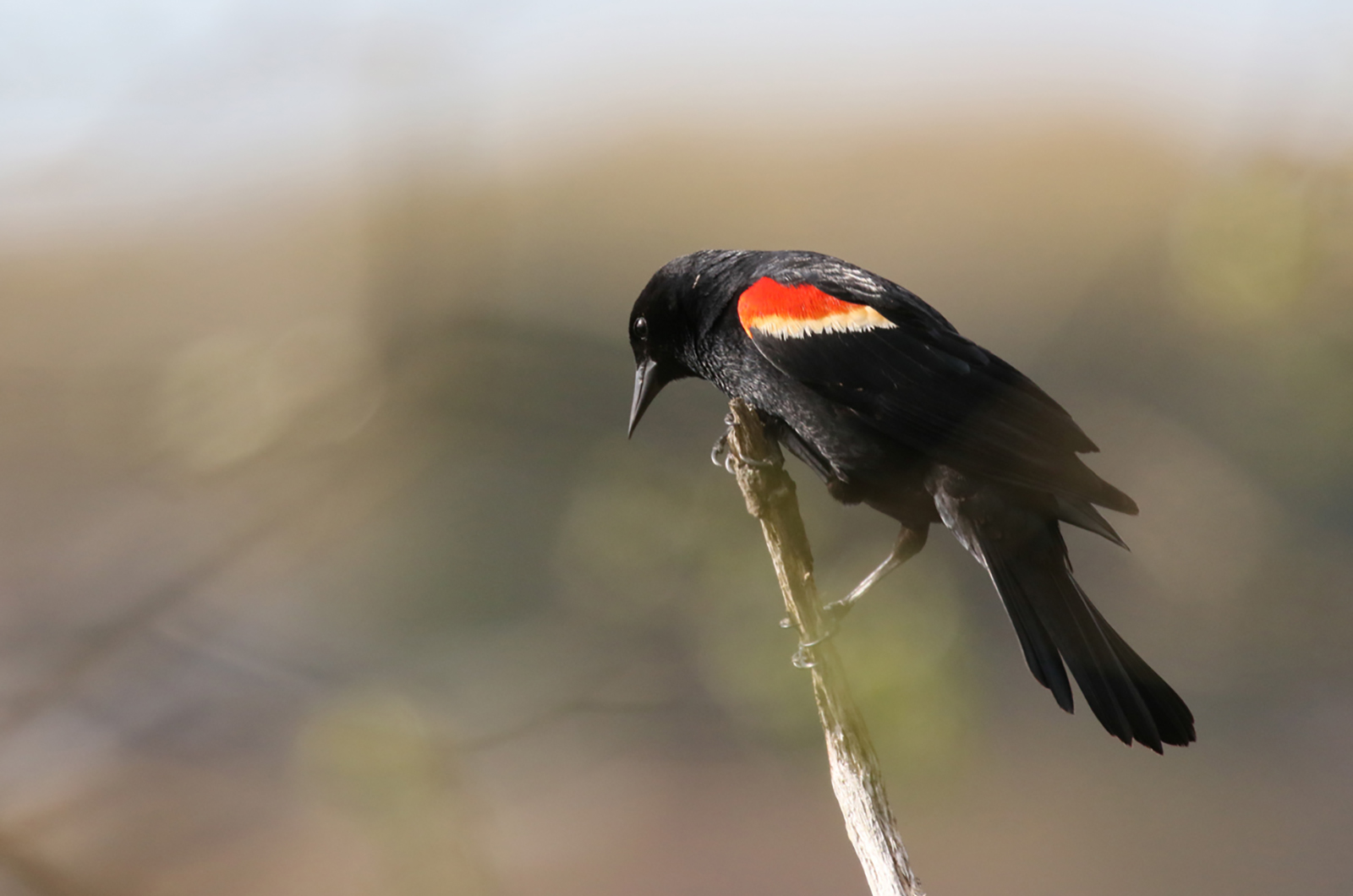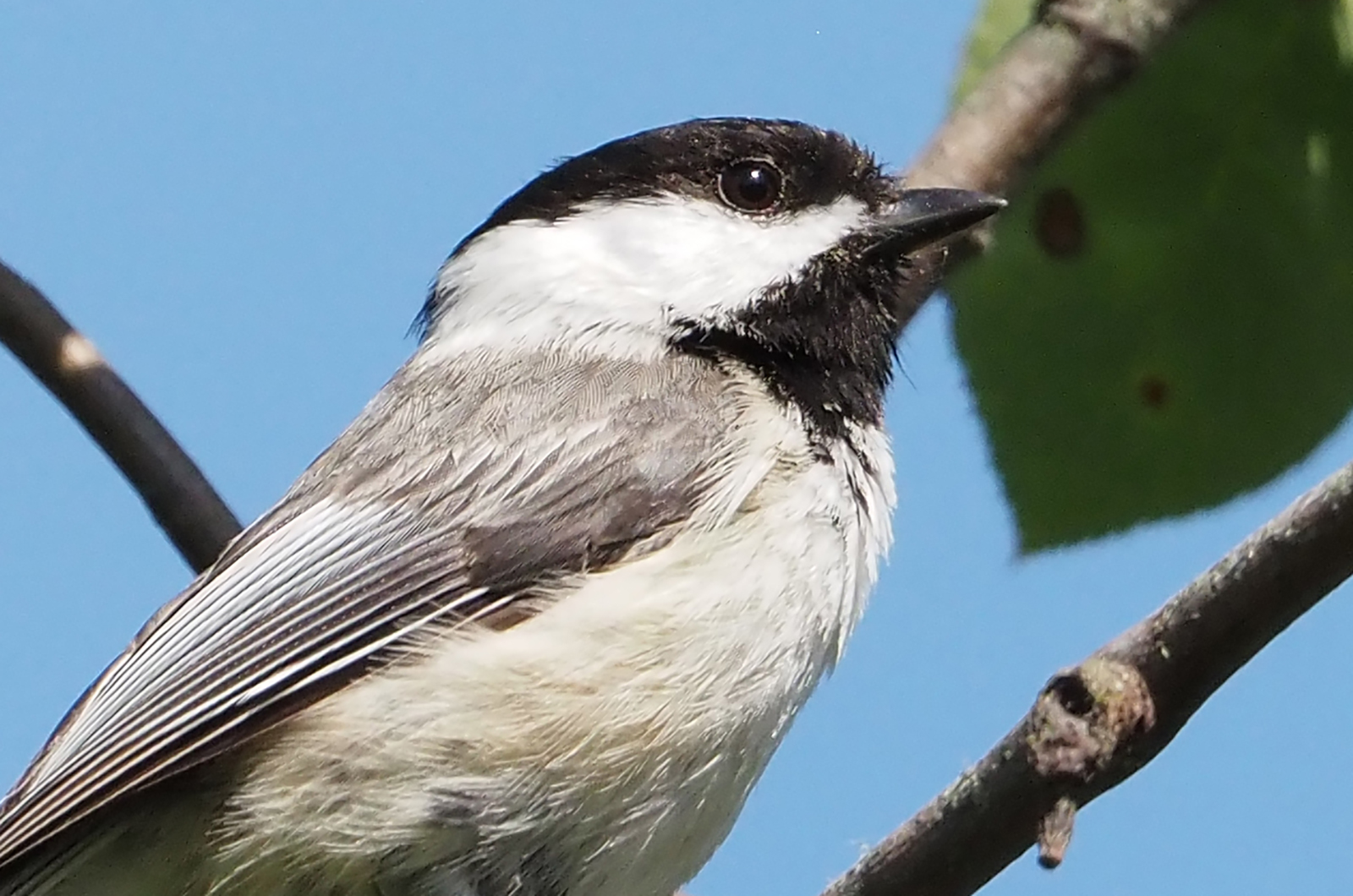The northward migration has started with the arrival of a few red-winged blackbirds and grackles. Can spring be far behind? Unfortunately, the answer is likely to be yes; spring is getting closer every day!
Ken LaVigne reports a female red-winged blackbird visited his Ocean Heights feeder on Feb. 14, and the next day Ned Casey reports that both grackles and red-wings were making a ruckus at his Ocean Heights feeders. Lydia Reininger has also had these two species at her feeders and Penny Uhlendorf saw four red-wings at Pilot Hill Farm on Feb. 19. Also on that day, Margaret Curtin and Luanne Johnson spotted four red-wings at the Gay Head Cliffs.
Another sign of the approaching spring is that birds are starting to sing! On Feb. 18 Nancy Nordin spotted five red-wings that were singing loudly at the Tashmoo Water Works. Their singing really emphasizes that these birds are thinking about spring and the upcoming nesting season; likely their red epaulets were also conspicuous. Our winter resident blackbirds are still silent and their red epaulets are mostly covered by black feathers.
Other birds are also starting to sing. Margaret Curtin has heard a resident song sparrow singing early each morning; on Feb. 19 he started singing at 6:05 in the morning. She has also heard song sparrows and black-capped chickadees singing when she is out and about.
Wendy Culbert and I visited the Southern Woodlands on Feb. 18 and heard chickadee, mourning doves, tufted titmice, Carolina wrens and northern cardinals. We also heard blue jays: they are amazing vocalists with their “wheedle” song — or at least that is how I describe it. Nancy Weaver has also been hearing cardinals singing near her Vineyard Haven yard.
Increased bird song means that birds are increasingly territorial, as the males use their singing to establish their territories. I doubt anyone would claim red-tailed hawks sing but on Feb. 11 Jeff Bernier observed a pair of very upset red-tails swooping around and being very vocal.
A great egret sighting anytime in February is noteworthy. Since at least one great egret was around in early January, it is hard to tell whether the two sightings reported here are birds attempting to overwinter or whether they are very early northbound migrants. Thaw Malin and Cynthia Bloomquist found a great egret along the edge of Slough Cove on Feb. 16 and Matt Born spotted a great egret on the shoreline of southwestern Squibnocket Pond on Feb. 14.
Was the first migrant American oystercatcher of the season seen by Ned Casey on Feb. 15? He heard what sounded like an oystercatcher along Sengekontacket Pond, and their call is quite distinctive. Unfortunately, he could not find it.
Another intriguing sighting is one of a carefully-observed lesser yellowlegs, spotted on Sarson’s Island by both Nancy Nordin and Lisa Maxfield on Feb. 12. Both observers commented that the bill was about as long as the head was deep; an important field mark given that we know their larger cousins the greater yellowlegs have been here through the winter. There is a late January and early February sighting of this species from Nova Scotia and closer to home in Delaware.
Matt Pelikan visited Cranberry Acres on Feb. 16 and counted 88 ring-necked ducks. Now that is a lot of ring-necks for the Island; perhaps the largest number ever recorded on one pond. My data shows that the last time that many were seen was on the 2011 Christmas Bird Count: 90 were seen from six places across the Island. And 157 were seen on the 2007 bird count but, again, across six different locations. That year the maximum flock size was 65 from Edgartown.
The seabird show continues with some more very impressive numbers. Allan Keith watched five razorbills off Squibnocket on Feb. 11 and then found 15 razorbills and five dovekies off the Gay Head Cliffs. Rich Couse observed one razorbill on Feb. 12 at Philbin Beach, the same day that Bob Shriber found 22 razorbills, five black-legged kittiwakes and one northern gannet in the ocean off Black Point Pond.
Matt Born spotted 100 razorbills on Feb. 14 at Squibnocket Point. That same day, Bob Shriber was at Pilot’s Landing and saw one dovekie, 1750 razorbills, 114 black-legged kittiwakes; in one hour, flocks of 20-25 kittiwakes flew by. On Feb. 19, Nancy Weaver spotted a dovekie off Moshup Trail, and both Luanne Johnson and Margaret Curtin added a dovekie, 360 razorbills and two gannets.
A wider variety of gulls continue to be present around the Island. On Feb. 10 Shea Fee found three Bonaparte’s gulls at Wasque. On Feb. 11 I spotted a Bonaparte’s at Crystal Lake and Matt Pelikan found one that day as he birded both East and West Chop — maybe the same bird. And near the East Chop Beach Club I found a first winter Iceland gull perched on a dock with herring and ring-billed gulls.
One final note about American robins. We have two slightly different subspecies of robins; the darker-backed individuals breed across Canada and winter in our area while the lighter-backed individuals are those that nest here and winter between southern New England and Mexico. I saw a flock of 63 robins at the Waller Farm on Feb. 20 that had the lighter backs, which made me wonder whether they were our nesting birds that were attempting to overwinter, or whether they were the first of the northbound migrants passing through.
We will know when our breeding robins show up as they will be paired up, hopping around our yards and singing from the treetops. I have not seen that yet.
Please email your sightings to birds@vineyardgazette.com. Note the slightly-changed email address.
Robert Culbert is an ecological consultant with Nature Watch LLC living in Vineyard Haven.









Comments
Comment policy »